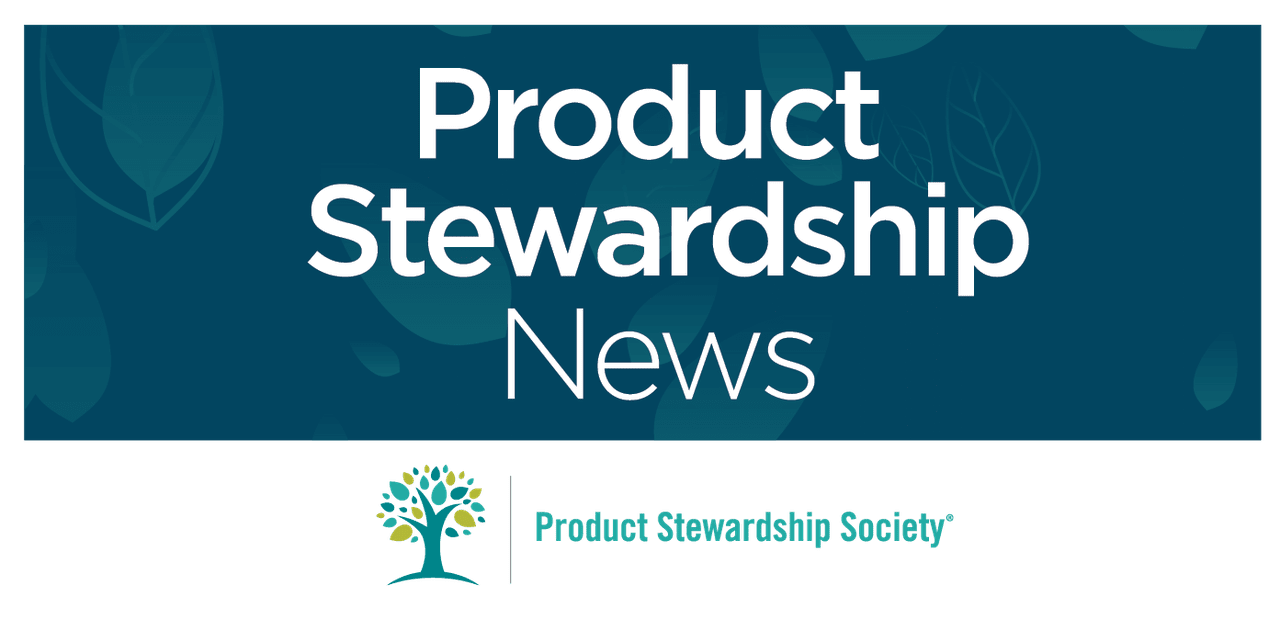



The Synergist welcomes members of the Product Stewardship Society to this special section on product stewardship. Visit productstewards.org for the latest news and educational opportunities.
New Rule Requires Reporting for 50 Chemicals
A final rule published by EPA on June 29 requires manufacturers and importers of 50 chemicals to report data from certain unpublished health and safety studies to the agency. The chemicals affected include 20 chemicals designated by EPA as “high-priority” substances that are being evaluated for risk under the Toxic Substances Control Act and 30 organohalogen flame retardants being evaluated for health risks by the Consumer Product Safety Commission. The new rule also requires manufacturers to submit unpublished studies on occupational, general population, and consumer exposure for these chemicals. For more information, read the final rule in the Federal Register.
Fleeger Award Winner: Thomas Grumbles

Thomas Grumbles, CIH, CPPS, has been named the 2021 recipient of the Product Stewardship Society's Allan K. Fleeger Distinguished Service Award. Grumbles, now retired, is the former manager of occupational health for Sasol North America and a past president of AIHA and the Product Stewardship Society. Named after the Society’s first president, the Fleeger Award recognizes the contributions made by a product steward to support the growth and success of the Society and the product stewardship profession.
EPA Renews PFAS Program
Building on a 2016 outreach effort, EPA announced in July it will work with companies to encourage voluntary withdrawals of low-volume exemptions, or LVEs, for per- and polyfluoroalkyl substances (PFAS). Under the PFAS Low-Volume Exemption Stewardship Program, EPA will seek voluntary withdrawals of LVEs for shorter-chain PFAS. Withdrawing an LVE indicates that a company will not manufacture or import the chemical, although the company may continue to process, distribute, or use existing stocks of the substance.
Team Membership Offers Discounted Membership Rate
A new membership option launched in July provides product stewards from the same company access to professional development and other resources from the Product Stewardship Society at a discounted rate. The new team membership includes categories for organizations with up to nine employees, organizations with 10-49 employees, and organizations with 50 or more employees. Each category is further divided into tiers to better support organizations of all sizes.
Team members receive Premium-level membership benefits, including unlimited access to the Stewardship On Demand learning library, a subscription to the Full Circle e-news brief, and member pricing on Society publications and education programs. For more information, visit the Product Stewardship Society website.
CPPS Exam Application Deadline: Jan. 15
The next exam window for professionals seeking the Certified Professional Product Steward credential is March 1 to March 30, 2022. To sit for the exam, applications must be submitted by Jan. 15, 2022. Visit the website of the Board for Global EHS Credentialing to apply.
Launched in 2020, the CPPS is the first credential of its kind and provides product stewardship professionals with an opportunity to distinguish their expertise and build professional credibility within their organizations. Opportunities to sit for the exam, which is administered by the Board for Global EHS Credentialing (BGC), occur twice each year, once in the spring and once in the autumn. The Product Stewardship Society offers resources for exam preparation.
EPA Announces Changes to Risk Evaluations
EPA announced in June that it would review risks associated with 10 high-priority chemicals because recently completed risk evaluations did not address certain exposure pathways or potential exposures to subpopulations. The risk evaluations of 10 high-priority chemicals were required to be completed within three years by the 2016 Frank R. Lautenberg Chemical Safety for the 21st Century Act, which amended the Toxic Substances Control Act.
In addition, while EPA risk evaluations will continue to assess every condition of use for a chemical, the agency will issue determinations of unreasonable risk for a chemical as a whole instead of issuing separate determinations for each use.